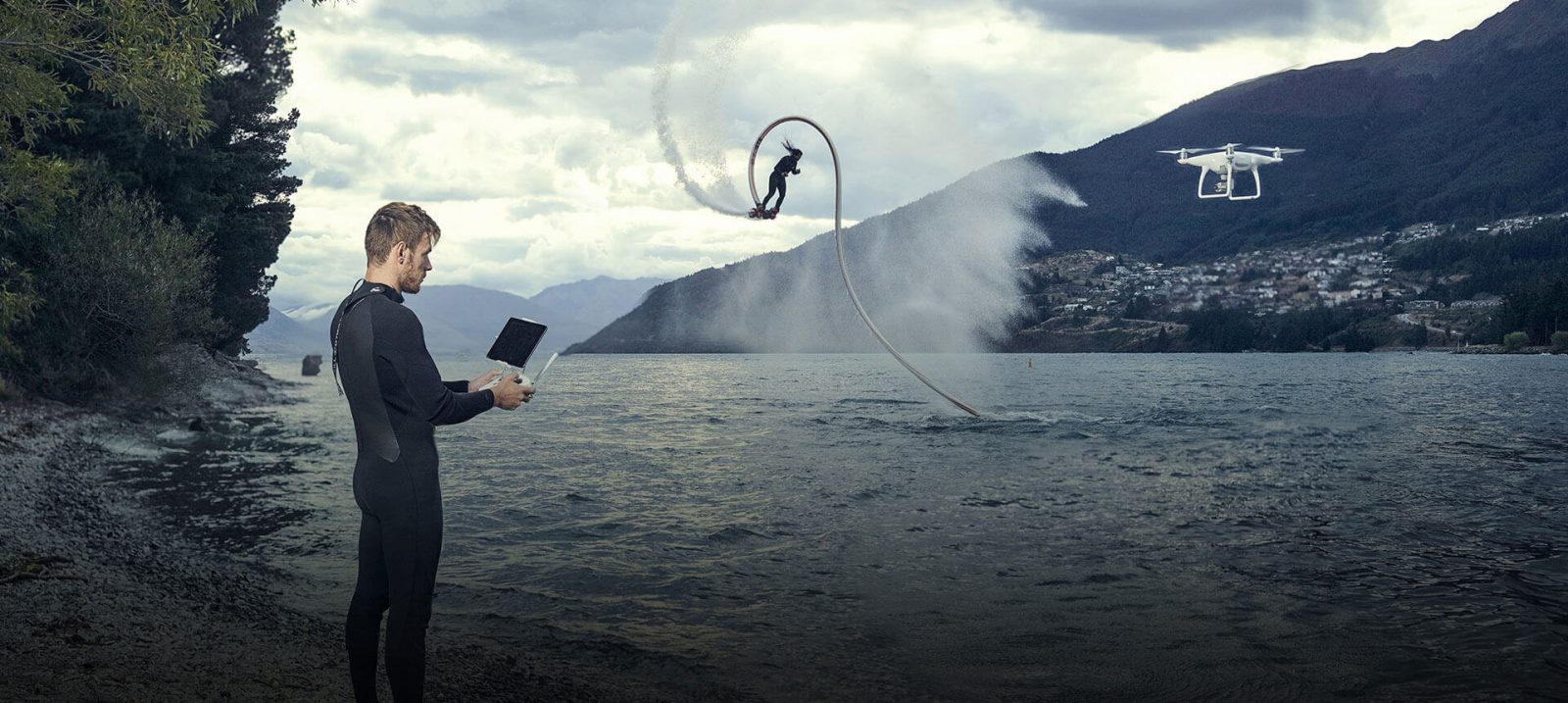
DJI took to heart the commonly offered criticism that aerial equipment is difficult to master, and leaves little room for error for first time flyers. The autonomous features incorporated into DJI’s new Phantom 4 make it the most user-friendly professional drone on the market. These automatic settings have been fine-tuned to offer only seamlessly smooth transitions in your footage, and avoid rigid motions that can mistakenly occur when learning to operate the aircraft.
Like the Phantom 3 Professional, the Phantom 4 was created to capture high-level aerial photography and cinematography. It still features the same, cherished 3-axis stabilization gimbal, and supports 4K video and 12.4M still image captures. The Phantom 3 has been our top-recommended drone, with three different versions to fit any aerial photo-niche. This new release is more reliable than ever before, but shows more than just subtle differences from the previous models. Let’s take a look at what’s new.
OSS obstacle avoidance
The new Phantom 4 is equipped with OSS - DJI's obstacle avoidance sensors. These sensors give the drone vision that covers the front 60 degrees of the aircraft, allowing it to dodge even small, and low-contrast items like chain link fences and tree branches. Keep in mind that this does not protect the surrounding area of the drone, as the sensors do not extend to the sides or back of the device.
When an obstacle is sensed up to 49 feet down the path, the Phantom 4 will avoid it and redirect the aircraft to the assigned route, or hover in place until you offer new instructions.
Sport Mode
Stronger, locking motors allow propellers to speed up, moving the aircraft at speeds up to 44MPH. Sport mode enhances ascent to 13MPH. This optimizes your flight time by only spending time capturing essential footage. Faster ascent and descent means you'll never miss the perfect shot.
Track Moving Subjects
The OSS sensors that allow the Phantom 4 to avoid obstacles also offer the ability to track moving subjects by locking them to the center of the frame. This feature can follow moving, or targeted subjects along a path or in an orbit, as indicated.
Touch to Fly
Touch to fly enables even first time flyers to create a path for the Phantom 4 to follow with the simple tap of the finger. The drone will automatically avoid obstacles along the route. Of course, all of the newly announced flight modes from Phantom 3 are still available in this sleek new version –
- Follow Me – Capture your every move from a unique aerial perspective when your aircraft is set to automatically follow its controlling app.
- Course Lock – This easy navigation allows you to fly in a set direction alongside moving objects or across scenes.
- Waypoints – Set multiple GPS points, or waypoints, and your aircraft will automatically fly to them while you focus on controlling the camera.
- Home Lock – Set your controls to be relative to a Home Point. Easily pull back on the control stick to bring the aircraft home, or push forward to fly farther away, independent of which way it is facing.
- Point of Interest – Set a specific location, object, or building as your Point of Interest, and the aircraft will continuously circle around it while you record perfect video and imaging.
What Else is New?
The Phantom 4 is equipped with an all new intelligent battery to offer 25% longer flight time (28 minutes), and packs enough punch to support Sport Mode flight speeds of 44 MPH. These batteries, like the Phantom 3 Intelligent Flight Battery, have LED power indicators
New Phantom 4 Propellers are also provided with the upgraded unit (and are only compatible with the Phantom 4). These are durable enough to withstand the high-speed Sport Mode of the Phantom 4.
The new Phantom 4 comes in a ready to carry case. Hard-shell travel cases are sure to follow.

